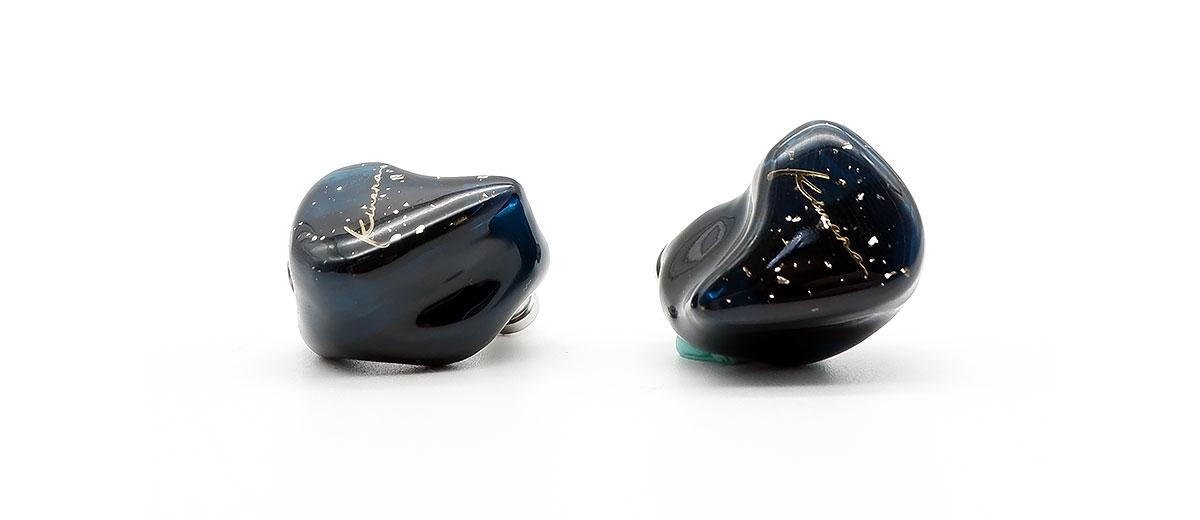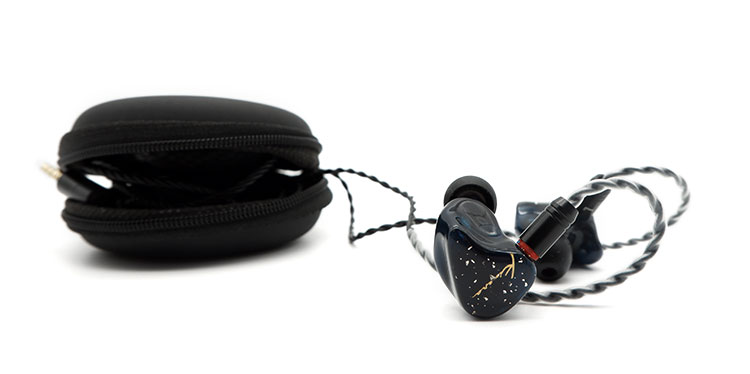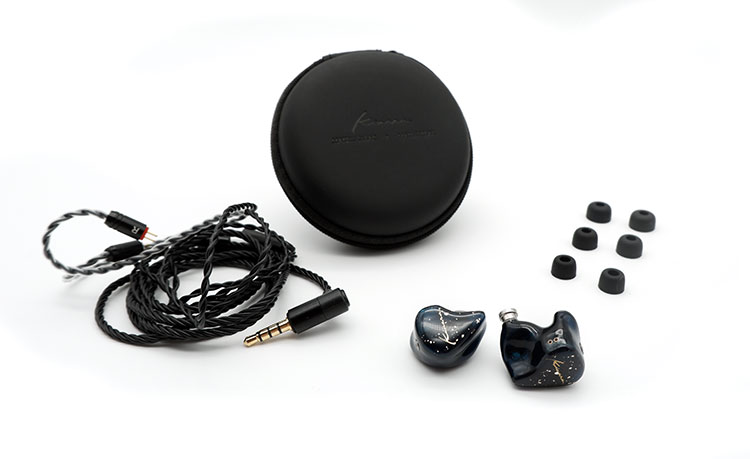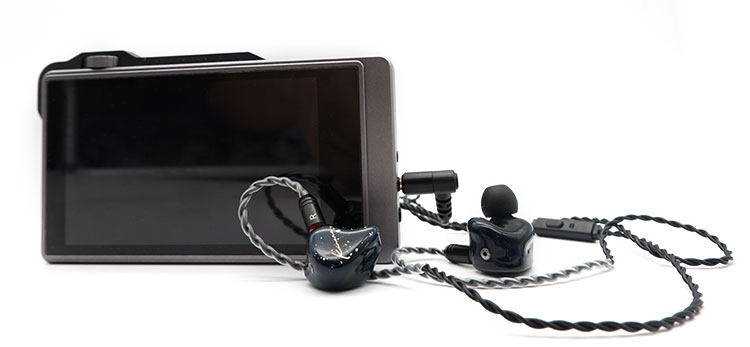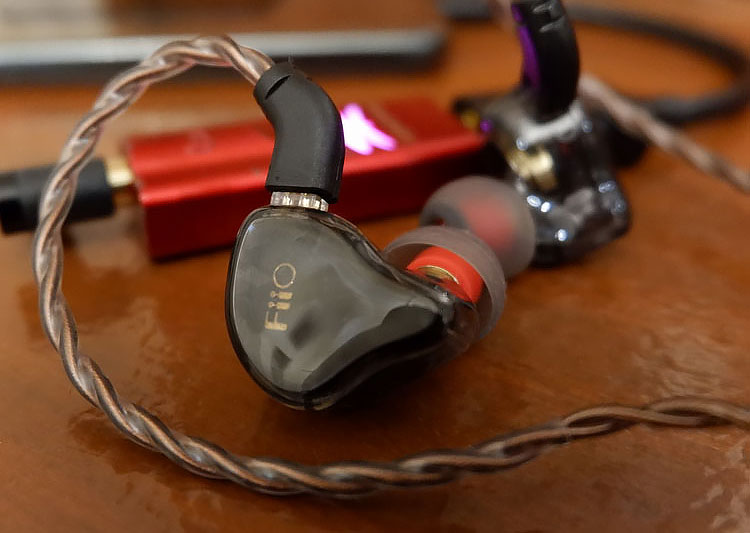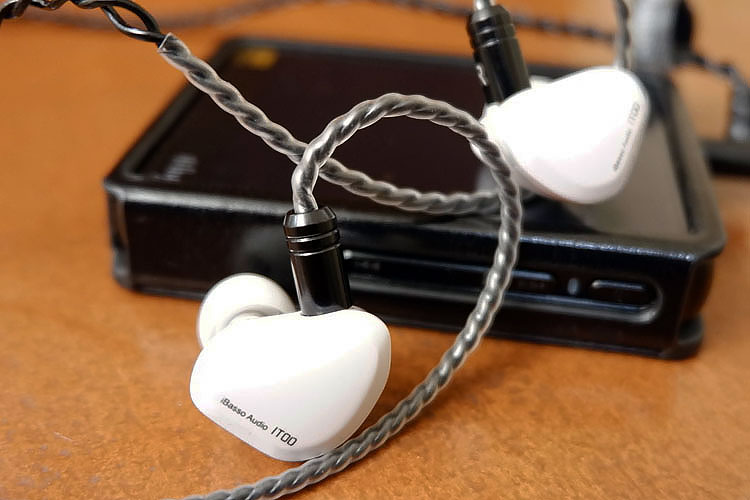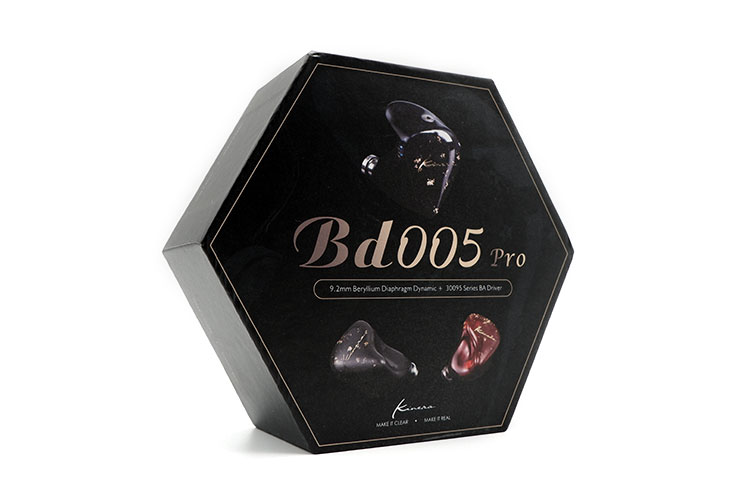The Kinera BD005 Pro is the company’s entry-level hybrid universal IEM featuring a 9.2mm beryllium diaphragm dynamic driver and a single BA. It is priced at $49.
Disclaimer: The Kinera BD005 Pro was sent to us a sample in exchange for our honest opinion in this review. We thank the team at Kinera and HifiGo for giving us this opportunity.
To read more on Kinera products we have reviewed on Headfonics click here.
Note, this review follows our new scoring guidelines for 2021 which you can read up on here.
In 2011, Yutai Electronics was launched in Dongguan China. They mainly focused on manufacturing drivers for military hearing aids, and later on ventured into manufacturing different driver technologies for other IEM manufacturers.
In 2016, YuTai launched their first in-house IEM, the BD005, which was equipped with a dynamic driver and a balanced armature driver. It was well-received by the market, and they went on to launch different models including the flagship Nanna, Idun, and the recent Norn among others.
This year, Kinera has gone back to refresh their original BD005, with the BD005 Pro. Using the same model number of an IEM that went on to be one of their first successful products, it’s interesting to see Kinera’s take on a budget hybrid IEM in 2021.
Tech Highlights
Similar to the original BD005, the BD005 Pro features 2 drivers in every shell. With the BD005 Pro, Kinera has chosen to integrate a 9.2mm Beryllium dynamic driver for the lows and mids, while a custom-tuned balanced armature driver is used to produce the high frequencies.
The BD005 Pro is rated at 26Ω with a sensitivity of 108dB, which can easily be driven by most devices. The BD005 Pro comes in 3 colors, red, blue, and gray. Each shell is 3D printed to ensure that each shell would conform to the curvature of the concha for an ergonomic fit.
Design
The carrying case isn’t much to look at, it’s a semi-hard shell zipper case laser etched with the Kinera logo in front. It’s tough though, so it will keep the IEMs protected when it’s stuffed inside a bag full of other things.
The cable is soft and wrapped in black PVC coating with an ear hook design near the IEM terminations. The termination on the IEM side is a 2-pin 0.78mm for each ear tip with a left and right indicator as well as a red ring on the right termination.
The cable is also equipped with a mic and a single button, while the other end of the cable is terminated in a 3.5mm TRRS L-type connector. Although a cable tie to keep it organized isn’t included, the cable is easy to arrange inside the carrying case, and bringing it out and unraveling it again is simple enough.
The shells themselves are come in red, gray, or blue. The one that was sent to us came in blue, and the ones in the marketing materials show a more solid color, but the actual IEM shells have a deeper translucent blue with gold flakes that accentuate the darker shade of blue.
Each shell is beautifully made, with a vent on the sides, and is equipped with a metal nozzle with a lip. The lip on the metal nozzle is a nice addition to ensure that the BD005 Pro can accommodate aftermarket ear tips without them falling off too easily.
Comfort & Isolation
With the ear hook style design of the BD005 Pro, it stays firmly in place in my ears when I start wearing them. The 3D-printed custom-looking shells give the BD005 Pro a precisely designed shell that ergonomically conforms to the concha of my ears.
So wearing them doesn’t become bothersome for me. Only in instances where I start lying down on my pillow where I start feeling that the shells are touching the inside of my ears. But as long as there isn’t anything pushing down on the IEMs, there is no reason that the BD005 Pro can’t be worn for hours of musical enjoyment.
With the smaller stock ear tips, they may sometimes leak sound, but as long as the music is playing, the BD005 Pro will sufficiently filter out the outside noise. The way that the sound is filtered out is quite pleasant, as it doesn’t feel like my ears are being sucked out when I wear them.
Packaging & Accessories
Being an IEM in the budget range, Kinera had to be fairly constrained with BD005 Pro when it comes to what accessories that they included. The BD005 Pro comes in a small hexagonal box that isn’t much bigger than the carrying case.
Inside the box, there is a foam insert, the semi-hard shell carrying case, and some papers. The box isn’t much to look at, but it does its job well and it keeps the IEMs safe while on the shelf or in transit.
Inside the carrying case, are the IEMs, and the cable. Each IEM is fitted inside small translucent plastic wraps to keep them from bumping each other. It’s already attached to a braided cable and fitted the medium Ear tips. Also inside the case are 2 extra pairs of ear tips, and that’s it.
Although the packaging is not elaborate, Kinera does a good job of protecting every part of the package to ensure that the IEMs will arrive with you in pristine condition. It’s simple, practical, and functional.
Sound Impressions
Bass
The sub-bass on the BD005 Pro is slightly rolled off, and it does not reach down to 20Hz. There is some sub-bass presence though, but it doesn’t have a powerful feeling to it.
The mid-bass on the BD005 Pro on the other hand is accentuated with a slight mid-bass hump. Drum hits are generally impactful and textured. There is a hollowness in each hit of the drums, and the attack is exceptionally accurate, but the decay takes a bit longer than expected.
Bass grooves like the ones on bass guitars are generally flowy and have an ambient vibe to them. However, each bass note that is played on the guitar has a slight boxiness.
Bass on the BD005 Pro does not reach down into the deepest regions of the sub-bass, but mid-bass is presented quite well, with a good sense of attack and presence.
Midrange
Generally, the midrange is slightly less elevated than the bass region. The BD005 Pro enhances the vocals of crooners like Gary Barlow or Michael Buble and makes vocals have a good amount of texture while having some airiness to the vocals when it’s called for.
Guitar strums on the BD005 Pro are very natural, with a slight bright tilt. Piano notes also have a natural character to them, however, piano notes in the lower registers tend to lack a bit of body because of some attenuation in the fundamental frequency. Cellos also have a similar presentation, where the body of the note tends to have a slightly thinner quality to it.
The upper midrange, going into the treble is slightly more elevated though, so upper registers and female vocals have a better sense of presence and weight.
Treble
Treble is slightly more elevated than the midrange and less elevated than the mid-bass region, but thankfully it is tastefully elevated. This also enhances the quality of instruments in the lower registers, giving them a good harmonic balance that ends up presenting many instruments with a brighter tilt.
Cymbal hits are sharp and splashy, but still retains a good amount of control and clarity. This gives treble a generally crystalline presentation. Finger snaps like the ones in the song Dance Monkey are also very natural with the BD005 Pro, they have a crisp character, with just the right amount of airiness to make it feel natural.
Although there is a slight treble uptick, the BD005 Pro still stays in the confines of having a safe treble tuning.
Staging
The soundstage on the BD005 Pro doesn’t feel too closed in, but the width of the soundstage itself is generally limited to at most 1 inch beyond my head. In some songs that have some sound elements that try to expand the soundstage, the BD005 Pro quickly shows the limits of the soundstage that it can create. It generally ends around 1 inch beyond my head, and it feels like a hard limit.
Image directionality tends to be quite accurate. When it comes to the placement of the images though, it seems like some songs are trying to stretch the image beyond the capability of the IEM, and this results in a slightly artificial image presentation. But for songs that are not particularly wide, the BD005 Pro does well.
For orchestral music, there is a tendency for the BD005 Pro to have a slightly more compressed presentation. It tends to play the whole song at a louder volume, which leaves little room for gentler passages, as well as more emotionally engaging crescendos.
Synergy
Source Pairing
With an impedance of 26Ω and a sensitivity of 108dB, it’s easy to assume that the BD005 Pro can be run off of anything that has a 3.5mm jack. And it’s true, with the stock cable featuring a mic and a button, it’s easy to say that the BD005 Pro can be run off of a phone. I was able to get respectable sound from it using my Xiaomi Redmi Note 9 Pro.
Volume never becomes an issue with the BD005 Pro, however, the BD005 Pro is resolving enough that there is an evident lack of vocal texture and sense of attack if the source is not up to the task. So when I moved up to testing the BD005 Pro with my Ibasso DX200, there was a marked improvement in terms of layering and image clarity.
Ear Tip Rolling
At the budget price point of the BD005 Pro, it’s understandable that it only has 1 set of ear tips in 3 different sizes. The ear tips that came with the BD005 Pro are larger nozzle ear tips that tend to accentuate the sub-bass roll-off.
Personally, I prefer a slightly more elevated bass response, so I tried looking for other ear tips from my box of ear tips and found that the Final Type E ear tips complemented the BD005 Pro quite nicely. It elevated the bass region to a more neutral response and made it a more exciting IEM overall while retaining the BD005 Pro’s detail retrieval capability.
Select Comparisons
FiiO FD1
Technical
Last year, the FD1 became my writer’s choice for bang for buck gear, because it was surprisingly impressive for the $60 asking price. At $10 less, the Kinera BD005 Pro may just offer a similar value proposition as what the FD1 did at the time.
In terms of accessories, the FiiO is still more generous than Kinera. Where FiiO features a larger and nicer box, with a clear hard shell carrying case, and a total of 3 types of ear tips out of the box.
The BD005 Pro and the FD1 have a few things in common, which include a Beryllium-coated dynamic driver, and the use of a 0.78mm 2-pin connection. However, the BD005 Pro takes it a step further by adding a balanced armature driver to take care of the treble frequencies. It will be interesting to see how an extra BA driver would make a difference between the 2 IEMs.
The BD005 Pro also features a 3D printed shell, instead of the injection-molded shells on the FD1. Both IEMs feature a metal nozzle with a lip for a good fit in the ear tips. Comfort-wise, both IEMs are generally comfortable, despite the BD005 Pro being 3D printed. The BD005 Pro ends up feeling a bit more robust when compared to the FD1 though.
While the cables look quite similar, the BD005 Pro has a black PVC coated braided cable, while the FD1 has a clear PVC coated braided cable. The BD005 Pro’s cable features a mic and a remote button though, while the FD1 is just a straight cable.
Efficiency & Matchability
In terms of sensitivity, both the FD1 and the BD005 Pro have similar sensitivity and impedance numbers. So driving them off of any source, I needed to increase my volume output by around 1% to achieve the same volume on the FD1 as I did with the BD005 Pro.
In practical terms though, both IEMs can be driven off of any source, but both IEMs can scale with upstream gear, so source pairing will play a part in bringing out their full potential.
Performance
Bass on both IEMs sounds strikingly similar, where there is a similar level of sub-bass roll-off. The midbass is about the same level, however, the clarity and texture are just a little bit more vivid with the BD005 Pro.
With the FD1 being a generally vocal-centric IEM, the vocals on the FD1 is a bit more forward and more textured. While male vocals like Michael Buble or Josh Groban have a textured quality on both, the FD1 just injects a bit more euphony in the vocal range.
Midrange instruments have a bit more girth and are a bit more liquid on the FD1, while they have a slightly drier and thinner presentation on the BD005 Pro.
Cymbals are a bit thicker on the FD1 as well, and they sound a bit more emphasized when compared to the BD005 Pro. However, when it comes to a sense of airiness, the BD005 Pro manages to be more airy, giving vocals, and other instruments a better sense of space.
Soundstage feels a bit more expansive on the BD005 Pro, however, elements within the soundstage are drawn a bit closer on the BD005 Pro. Imaging is a bit more vivid on the BD005 Pro though, as images on the FD1 are slightly grainier and take up a less specific location within the soundscape.
Summary
I’m quite impressed with the way the BD005 Pro is trading blows with my bang for buck choice for last year. At $10 less, the BD005 Pro doesn’t have as many extras but has some improvements on the IEMs themselves, which might prove a bit more valuable.
The FD1 has a more mid-centric tonality with a more liquid and euphonic presentation, while the BD005 Pro has an asymmetrical V-shaped tonality with a generally drier presentation.
Ibasso IT00
Technical
The IT00 features a single Graphene-coated dynamic driver, which makes the dynamic driver more rigid and less susceptible to distortions. This is similar to what is done by the Beryllium coating on the dynamic driver inside the BD005 Pro. But the BD005 Pro has an extra balanced armature driver inside, so this might just tip the scales for the BD005 Pro.
The IEMs themselves have a white coating, but it seems like the IEM shells are made in 2 parts, so no 3D printed shells with the IT00 either. They both have a metal nozzle with a lip for fitting ear tips, but the IT00 has a replaceable nozzle cover.
The cable terminates with an MMCX connection with the IT00, which is a more robust connector than the 0.78mm 2pin connection on the BD005 Pro. The cables on the 2 IEMs look quite similar with a black PVC coating on both, but the IT00 doesn’t feature a mic either.
Efficiency & Synergy
With an impedance rating of only 16Ω and a sensitivity of 106dB, the IT00 is marginally more efficient than the BD005 Pro. The IT00 generally requires around 3 notches less on the Ibasso DX200 to reach the same volume as the BD005 Pro.
While the IT00 features 3 types of ear tips, I ended up replacing the ear tip on the IT00 with a third-party foam ear tip to boost the bass and make for an overall enjoyable experience. So both the IT00 and the BD005 Pro require third-party ear tips to sound their best.
Performance
The IT00 and the BD005 Pro have a very similar sound signature with both having an asymmetrical V-shaped sound signature. The IT00 has a bit more of a sub-bass extension though. The mid-bass quantity is about the same, but the IT00 has a bit of a more plucked but rounded quality to it, especially when there are drums in the song.
The midrange quantity is quite similar on both IT00 IEMs. However, the BD005 Pro has a slightly thinner but airier midrange presentation. Treble is slightly more elevated on the BD005 Pro, and it has an overall better sense of airiness.
Soundstage feels more never-ending on the BD005 Pro, however, the image formed is generally generated closer to my head on the BD005 Pro. Image directionality is equally accurate, but the images that are formed by the IT00 are just a little bit more chiseled.
Summary
Both IEMs have a strikingly similar sound signature, but the IT00 has a more rounded bass, with more image clarity overall. However, the BD005 Pro has slightly better treble clarity and airiness probably due to the addition of an extra balanced armature driver.
Our Verdict
Kinera didn’t have much to work with, and in terms of accessories, they had to scrimp on the accessories and the packaging that came with the BD005 Pro.
What impressed me with the BD005 Pro though, is that Kinera spent their limited budget wisely by focusing on the IEMs a bit more by adding a balanced armature driver, and 3D printed shells. Additional accessories are nice, but having a well-built IEM is much more important since accessories are a bit easier to come by.
With a balanced armature driver inside the BD005 Pro, the treble on the BD005 Pro is quite impressive. Although the midrange ends up being slightly thinner, the balanced armature driver creates a treble range that strikes a nice balance between the treble, midrange, and bass frequencies.
It also gives an airy presentation that allows the BD005 Pro to have an enjoyable and punchy bass line while still not feeling rather expansive.
Kinera BD005 Pro Specifications
- 3D Printed Earpieces.
- 2mm Beryllium Diaphragm Dynamic Driver Unit.
- Custom tuned 30095 series high-frequency BA driver.
- 2-Pin 0.78mm Connectors.
- Impedance: 26Ω.
- Frequency Response Range: 20Hz-20kHz.
- Sensitivity: 108±2dB.
- Termination Plug: 3.5mm

